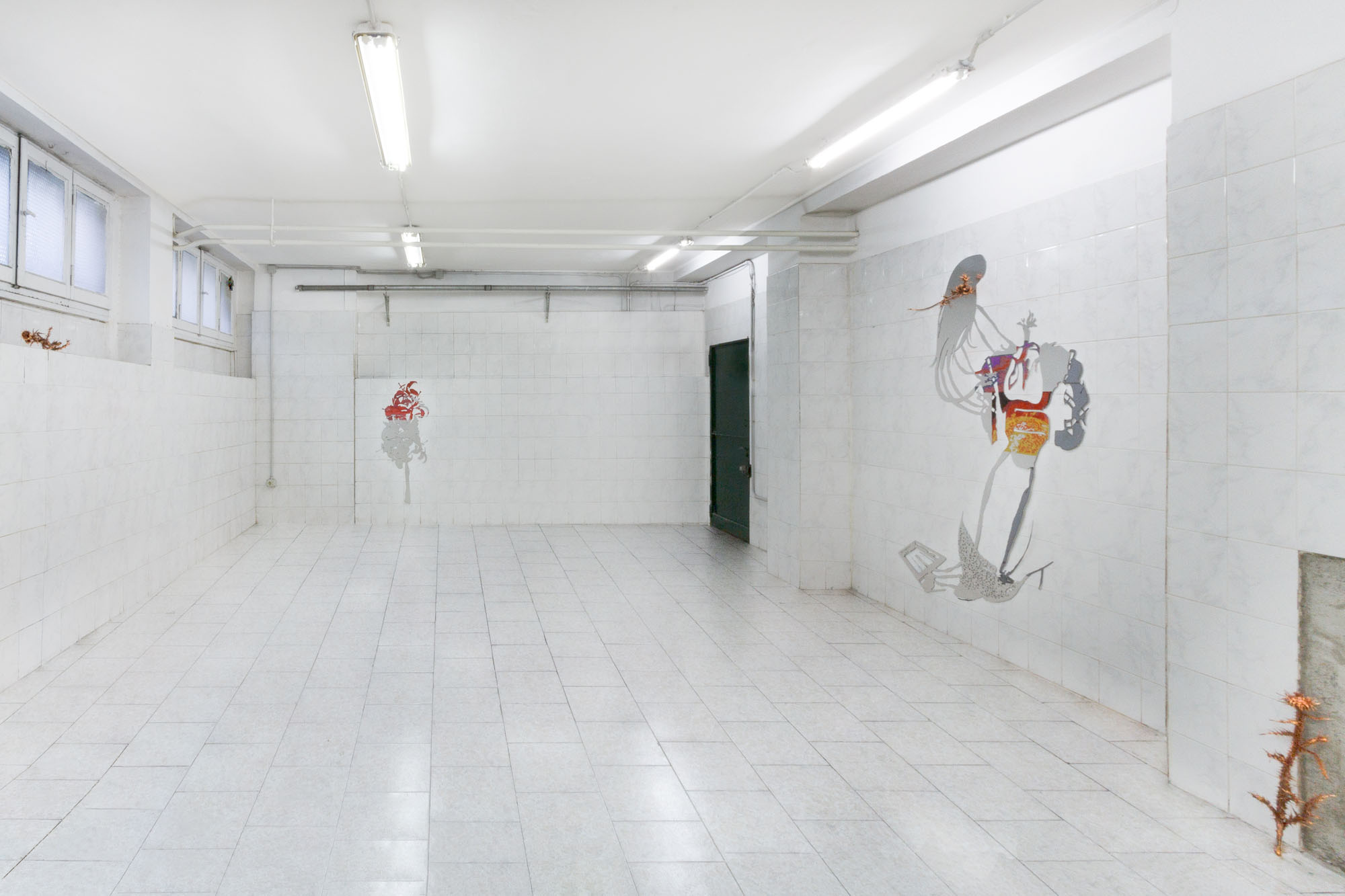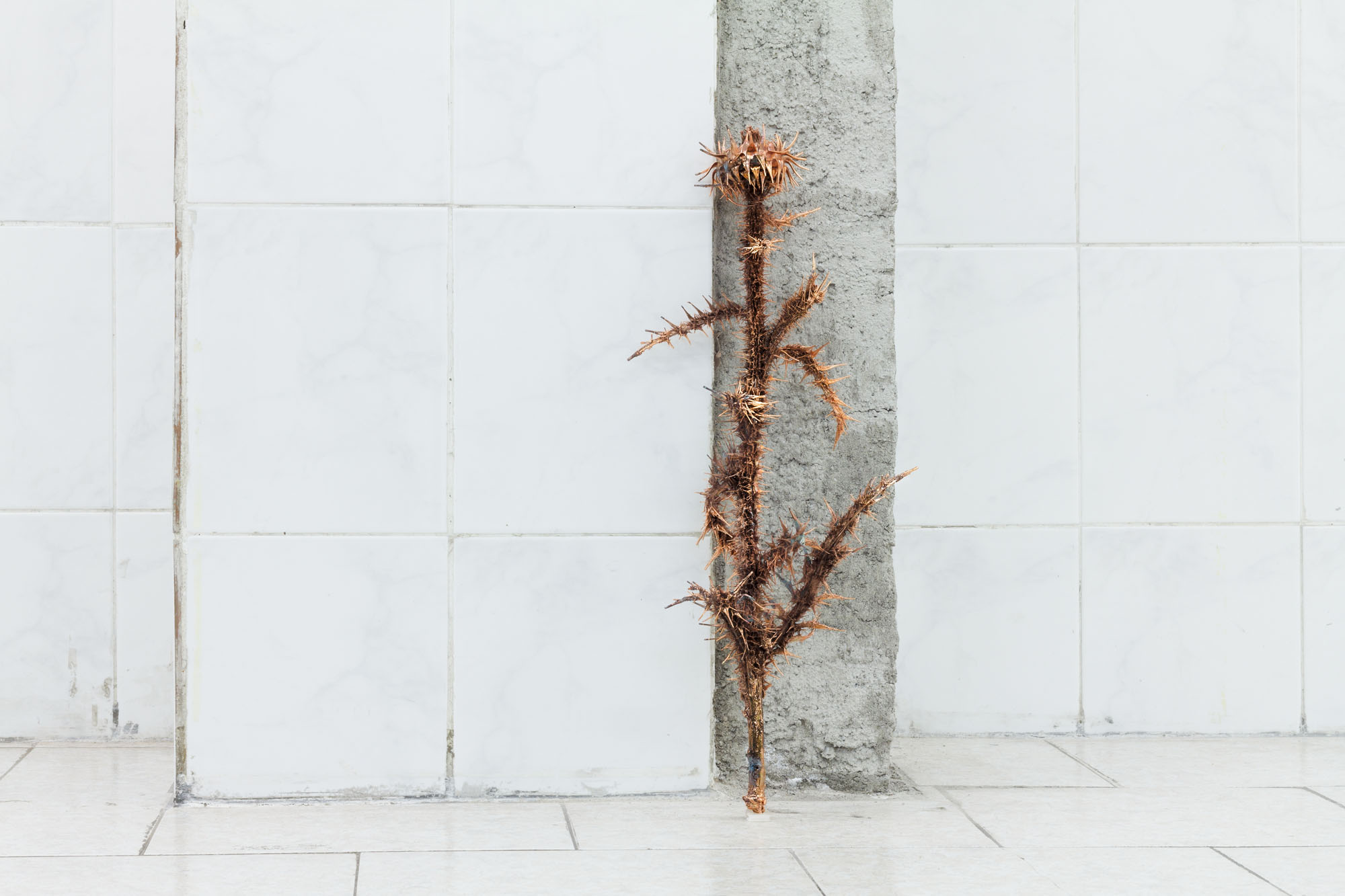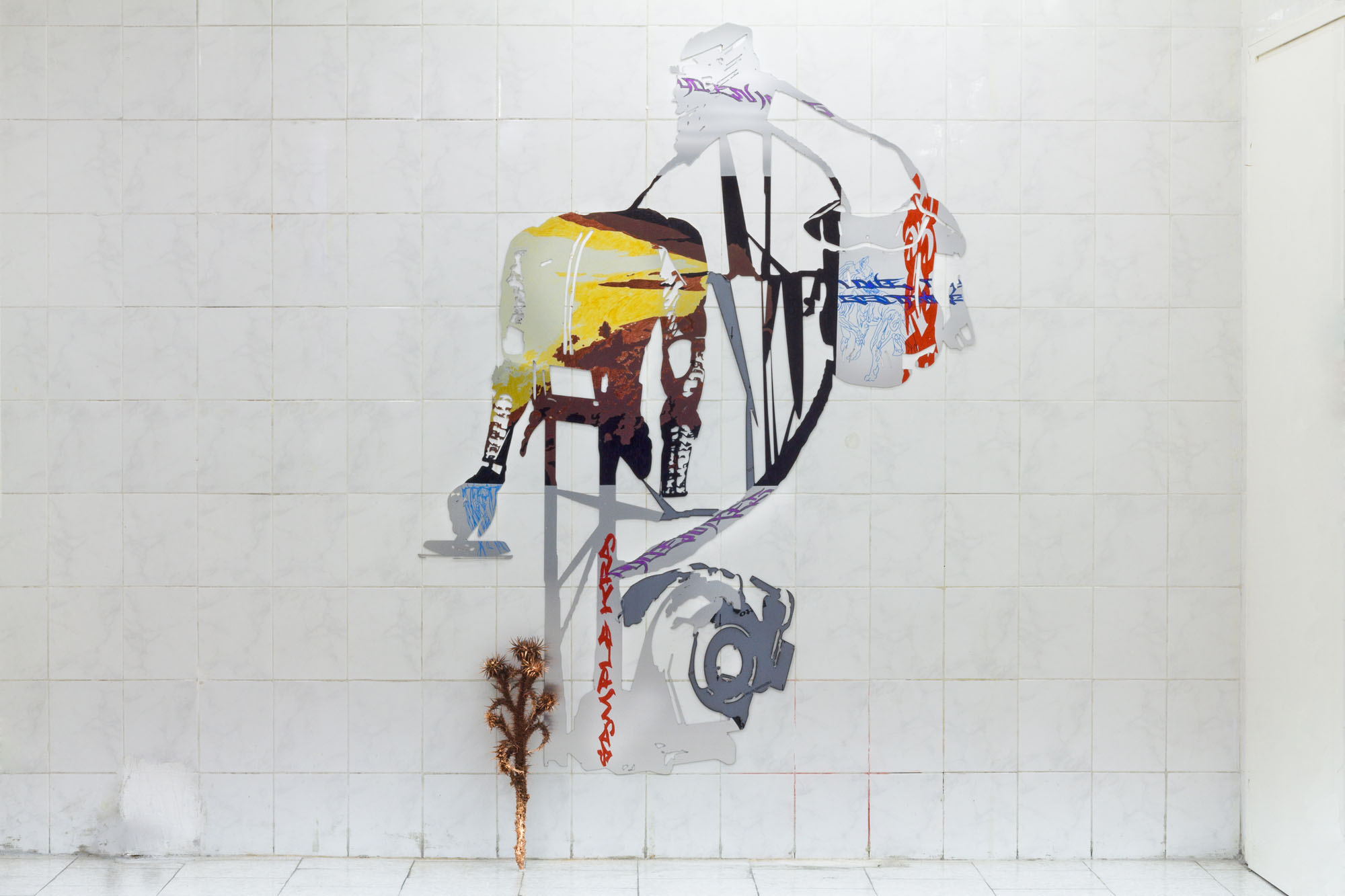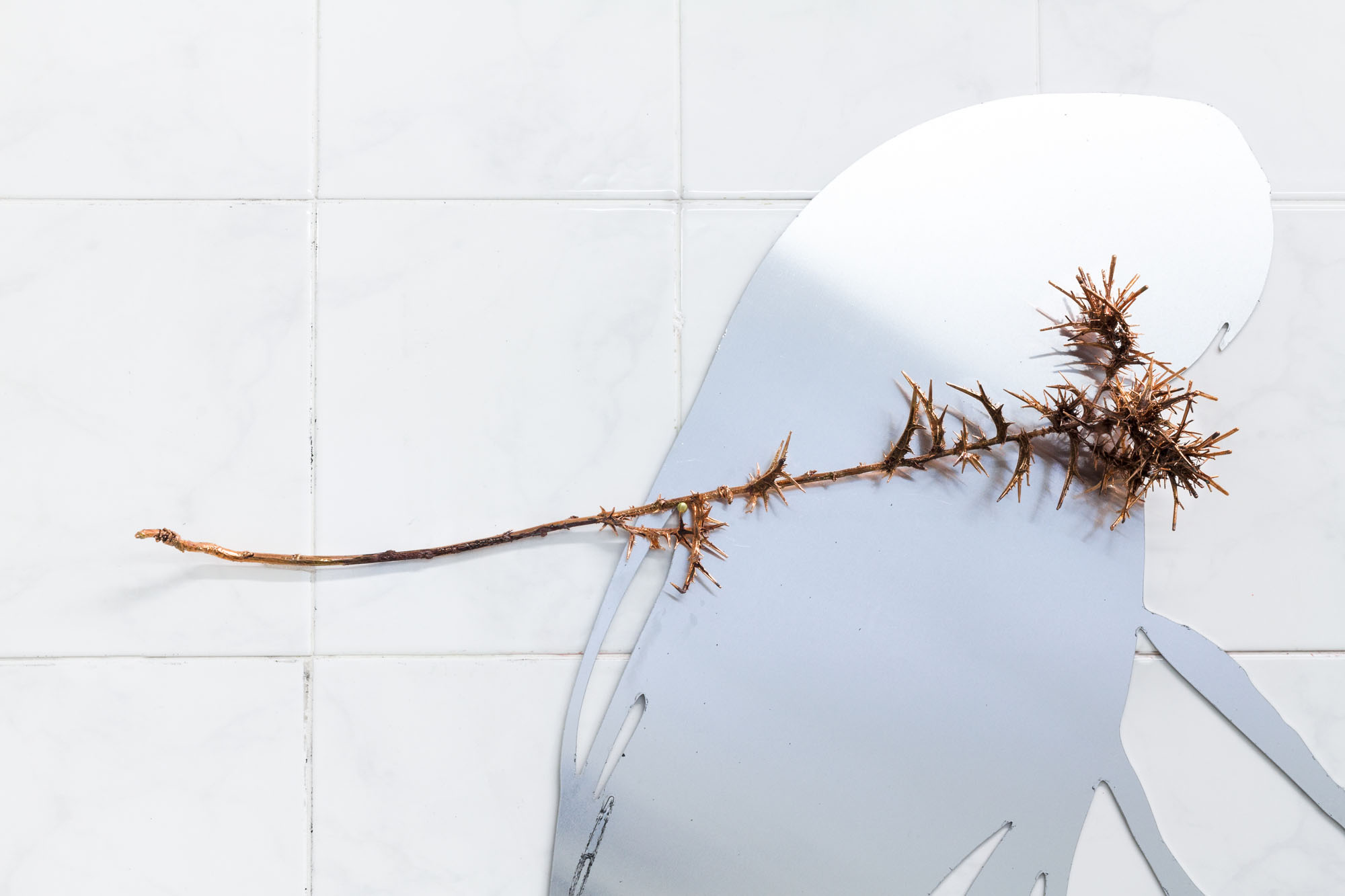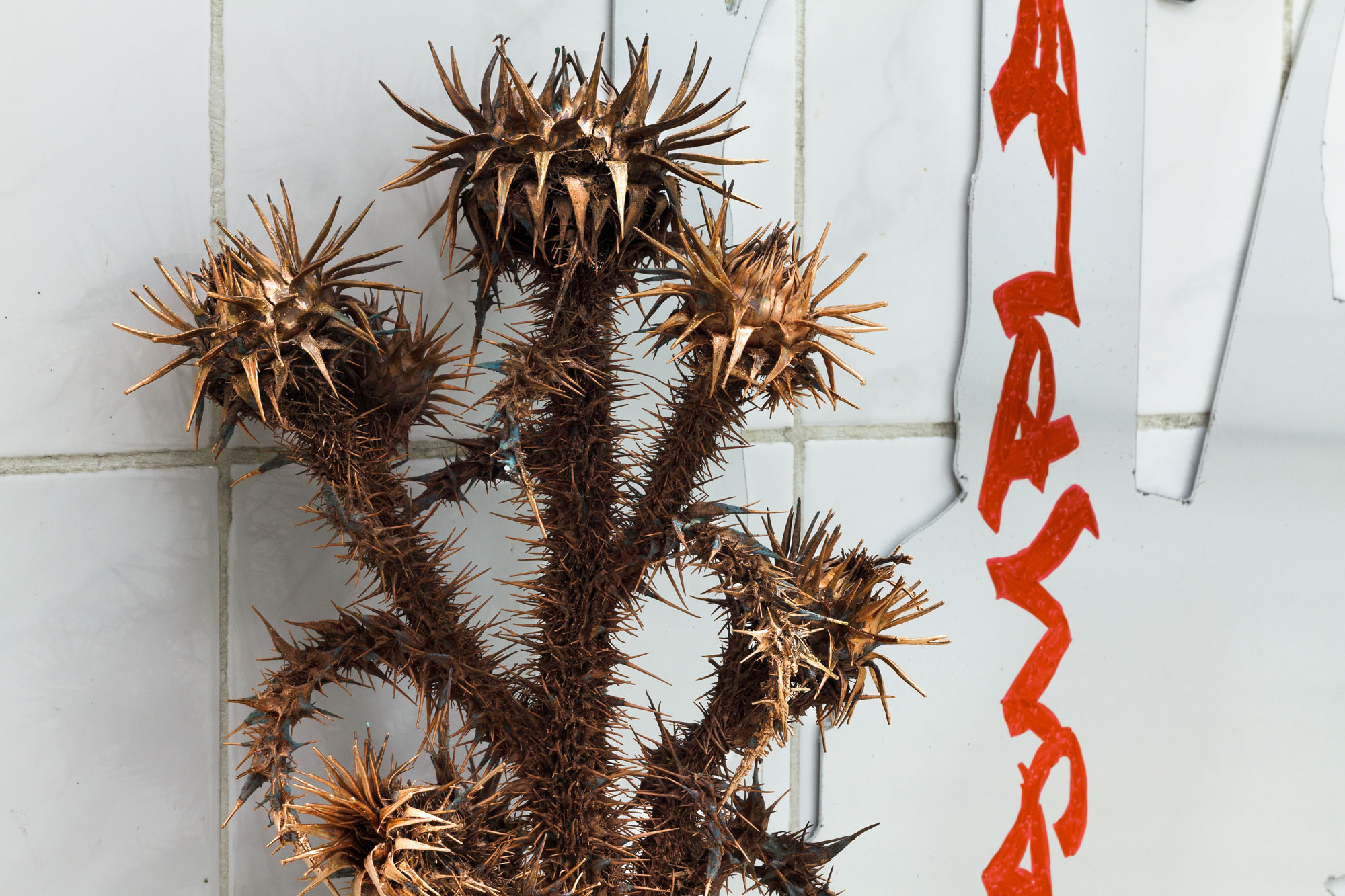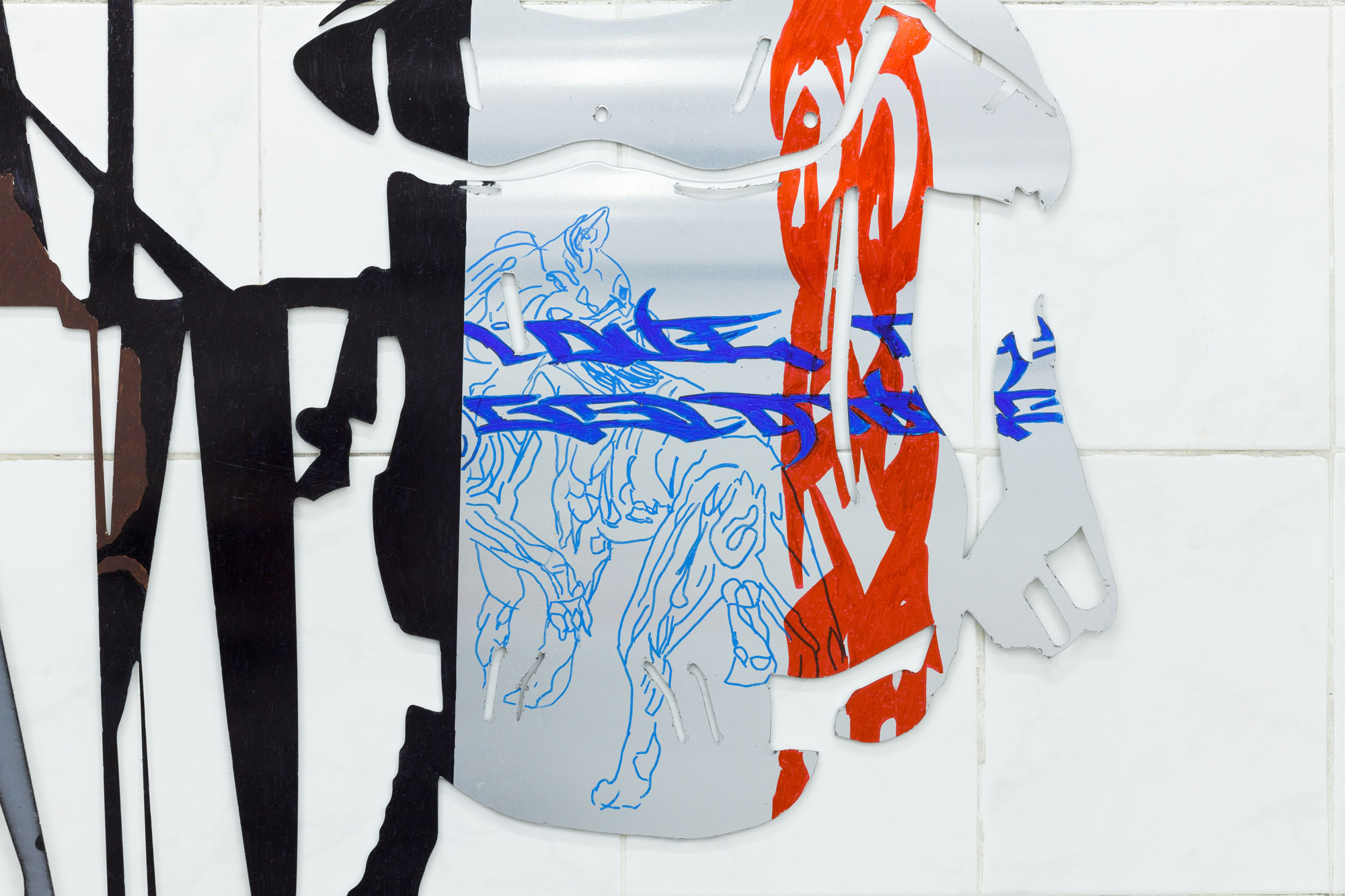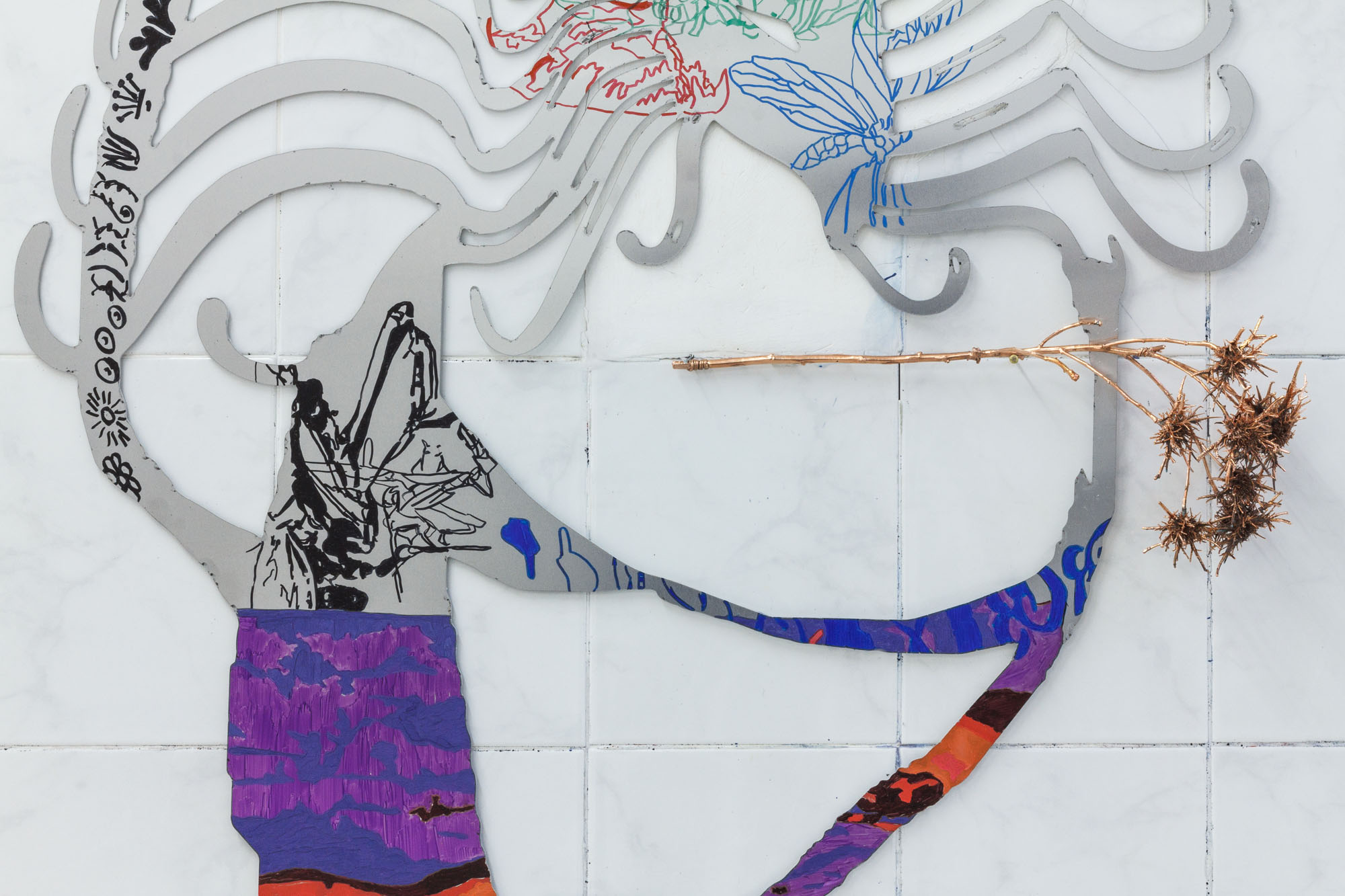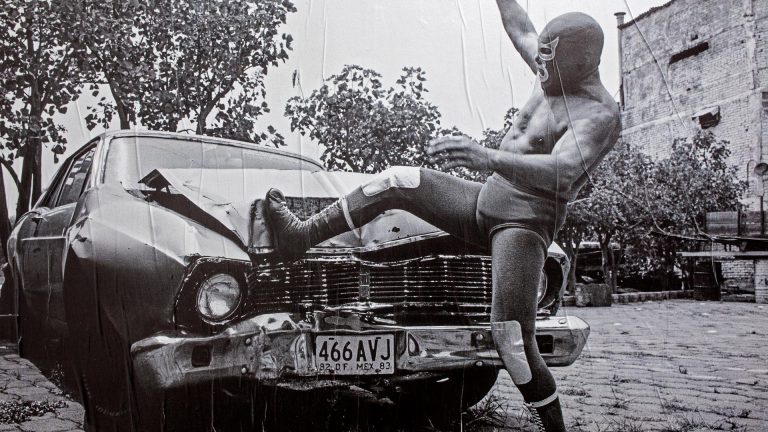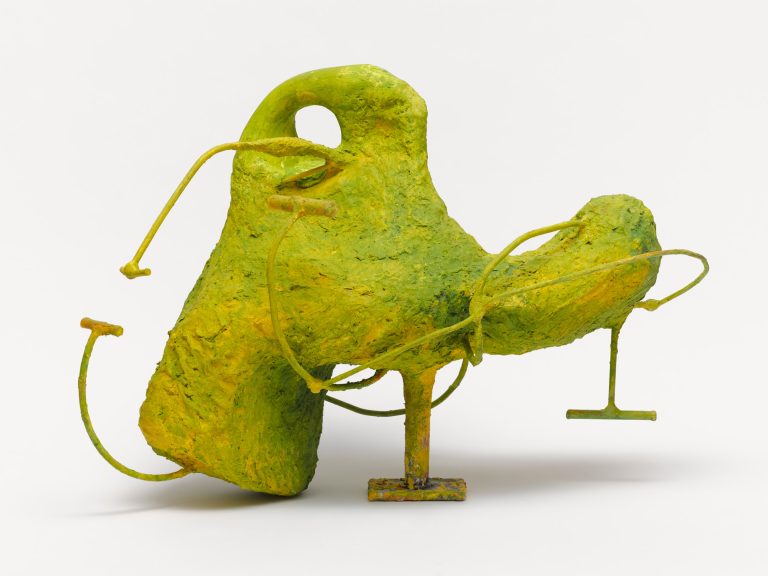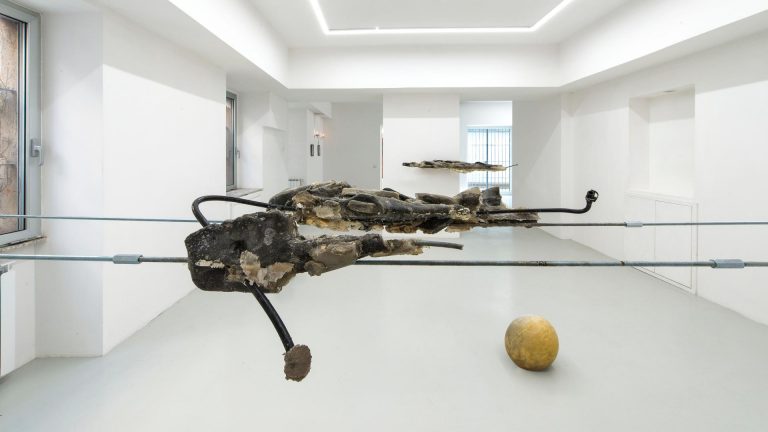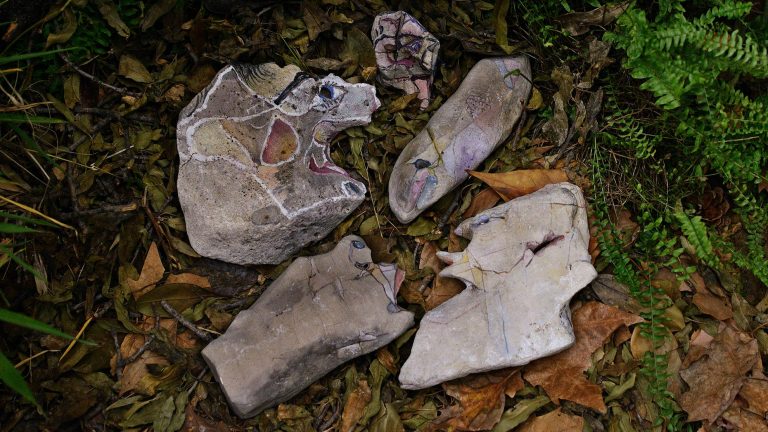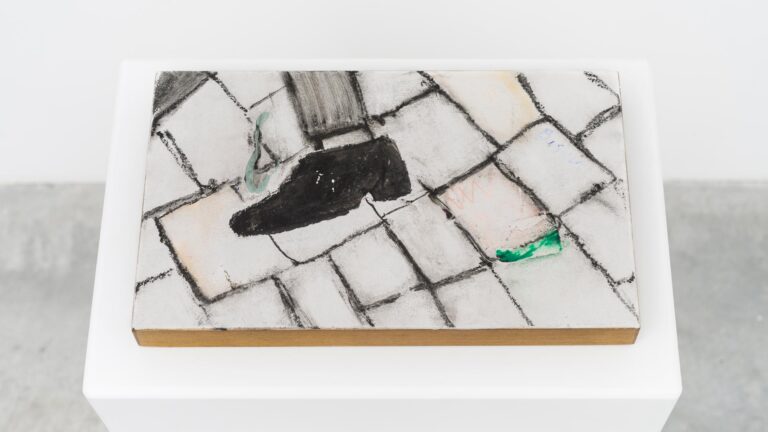Artist: Lito Kattou
Exhibition title: Unknown Synergy
Curated by: Mattia Giussani
Venue: Tile Project Space, Milan, Italy
Date: May 28 – June 29, 2018
Photography: all images copyright and courtesy of the artists and Tile Project Space, Milan
Tile Project Space presents Unknown Synergy, the first Italian solo show of Athens-based artist Lito Kattou.
The exhibition, curated by London-based curator Mattia Giussani, will present a new body of mixed media works by the artist. Kattou will come up with a new approach of exploring the ideas and synergies surrounding the roles of human and non-human agents, as well as which implications these relationships have on the ecological transformation, adaptability and concerns.
“Nature is declining globally at rates unprecedented in human history — and the rate of species extinctions is accelerating, with grave impacts on people around the world now likely”. 1 This is the alarming opening statement of a recent report released at the end of April 2019, from the Intergovernmental Science-Policy Platform on Biodiversity and Ecosystem Services (IPBES), an independent organism created by United Nations in 2012.
In this new ecological world without nature2, where conditions of species survival on planet Earth are deteriorating year by year, how is it possible to tackle and analyse the relationships between human and non-humans agents? Within the contemporary techno-capitalistic structure, in what terms should we discuss humans relationships with non-humans agents living in the same uncertain world?
As the German Scholar Erich Hörl3 states, Ecology has started to designate the collaboration of a multiplicity of human and nonhuman agents: “it is something like the cipher of a new thinking of togetherness and of a great cooperation of entities and forces, which has begun to be significant for contemporary thought.” (Hörl, 2017)
For her first solo exhibition in Italy, Unknown Synergy, Lito Kattou produced a new series of human-like sculptures of bodies shaped as a composition, an assembly of human, technological and natural parts that come together to form something that reminds a new form of environmental creatures. Looking at the artist’s series of work Body, the complexity of the shapes used in each of the three sculptures is striking. In these visibly digitally fabricated aluminium artworks, the different composing elements are fluid and harmonic, interconnected to one another. A flower-headed upper part of a human body and legs with a stingray attached to them, commanded by a screen; a resembling like fish; a deconstructed human figure powered by a turbine motor. All of the sculptures have hand-painted drawings or acrylic paintings of sunsets and landscapes that are carried as equipment, attributes, adornments and abstract skills by the bodies.
The influence and role of technology in these hybrid beings is visible in their functioning, and as expressed by theorist Luciana Parisi, “Ecology involves the capacities of the environment, defined in terms of a multiplicity of interlayered milieus or localities, to become generative of emergent forms and patterns”4 (Parisi, 2017). These newly formed patterns are a typical example of what the Cypriot artist is trying to expose with her sculptures. Ecology, intended as a synergy of different organisms and agencies, generating new types of figures and configurations, something that can be linked to and seen as a realization of what critical posthumanist Rosi Braidotti would see as a post-anthropocentric model that places the preservation of the “dynamic, self-organizing structure of life itself”5 (Braidotti, 2013).
It is possible to say then that synergy has become the “principle of principles of ecology”6 (Neyrat, 2017) that characterizes our contemporary condition. As a consolidated fact that nature doesn’t exist anymore as previously intended in this ecological condition, “everything makes itself over and over again, endlessly constituting and reconstituting itself, ceaselessly becoming” (Neyrat, 2017)7. This can be recalled with the fragile Mediterranean dried milk thistles that the artist uses. In this new version, the copper electroformed thistles can be interpreted in different meanings. They can be used in an encounter, gifts to be given to other bodies, or paying tributes to bodies that are gone. Nature that repeats itself over and over again, carrying with it different values and uses.
Looking at the artist’s work, it is clear how this (once) unknown synergy between humans and non-humans is fundamental, and how breaking these interconnections is not a viable option. The fragile equilibrium, and yet a connectiveness that pervades Kattou’s work, envisions and mirrors the key topics of debate regarding ecological worlds, showing how the separation between all the agencies that populate Earth would not be possible and how it would be counter-productive, exposing the very changes we’re dealing on a day to day basis, and envisioning what the future is holding for us.
Text by Mattia Giussani
1 https://www.ipbes.net/news/Media-Release-Global-Assessment
2 Morton, T. (2010) ‘The Ecological Thought’, Cambridge, United States: Harvard University Press.
3 Hörl, E. (2017) ‘Introduction to general ecology – The ecologization of thinking’, in Hörl, E. (ed.) General Ecology, The New Ecological Paradigm, London, United Kingdom: Bloomsbury, p.3
4 Parisi, L. (2017) ‘Computational Logic and ecological rationality’, in Hörl, E. (ed.) General Ecology, The New Ecological Paradigm, London: Bloomsbury, p.83.
5 Braidotti, R. (2013) The Posthuman. Cambridge, United Kingdom: Polity press, p.60
6 Neyrat, F. (2017) ‘Elements for an Ecology of separation – Beyond ecological constructivism’, in Hörl, E. (ed.) General Ecology, The New Ecological Paradigm, London, United Kingdom: Bloomsbury, p.101
7 Neyrat, F. (2017) ‘Elements for an Ecology of separation – Beyond ecological constructivism’, in Hörl, E. (ed.) General Ecology, The New Ecological Paradigm, London, United Kingdom: Bloomsbury, p.104
Lito Kattou, born in Nicosia, Cyprus 1990, is a visual artist based in Athens. She is a graduate of the Royal College of Art in London with an MA in Sculpture and the Athens School of Fine Arts. Kattou is the winner of the Ducato Prize 2019, recipient of the New Positions Award for Art Cologne 2018 and she was the invited artist for the 89plus Google Residency curated by Hans Ulrich Obrist and Simon Castets at the Google Cultural Institute in Paris, 2017. She has presented her work in solo shows at the Artothek, Cologne; Polansky Gallery, Prague; Benaki Museum, Athens; ROOM E1027, Berlin; Point Centre for Contemporary Art, Nicosia; Eleni Koroneou Gallery, Athens; Clearview.ltd, London; Pierre Poumet, Bordeaux; Radical Reading, Athens and in various group shows at art spaces, galleries and museums including Nottingham Contemporary, Nottingham; Kraupa-Tuskany Zeidler, Berlin; Changing Room, London; Foothold, Bari; Komplot, Brussels; Midway Contemporary, Minneapolis; Benaki Museum and Deste Foundation, Athens. Her works are included in prominent international and private collections as the Dakis Joannou Collection, the collection of the National Bank of Greece, the collection of Deutsche Telekom. Mattia Giussani is an artist, curator and editor based in London. After graduating in BA Photography at Camberwell College of Arts in 2015, he graduated in MFA Curating at Goldsmiths, University of London in 2017. His research has strong interest in the relationship between digital technologies, social changes and the response of art to these challenges. Recently he’s researching within the Posthuman field, and using it as a navigation tool within different theories, especially in relation between art, computational culture, technology and new media. Recent artistic and curatorial projects include Heedful Sight at Like a Little Disaster (Polignano a Mare, Nov 2018, IT); Future Fictions at Assembly Point (London, Sep 2017, UK); Non Standard at T-Space (Milan, June 2017, IT); We are having a great time 🙂 at Rockelmann & (Berlin, 2016, DE); 9 Evenings: Theatre and Engineering Revisited 1966/2016 at Arts Catalyst (London, UK, 2016); Into The Fold at Camberwell College of Arts (London, UK, 2016).
Lito Kattou, Unknown Synergy, 2019, exhibition view, Tile Project Space, Milan
Lito Kattou, Unknown Synergy, 2019, exhibition view, Tile Project Space, Milan
Lito Kattou, Unknown Synergy, 2019, exhibition view, Tile Project Space, Milan
Lito Kattou, Unknown Synergy, 2019, exhibition view, Tile Project Space, Milan
Lito Kattou, Body III, Aluminum, Electroformed copper and permanent ink, 210×140 cm
Lito Kattou, Flower III, Electroformed copper, dimensions variable
Lito Kattou, Unknown Synergy, 2019, exhibition view, Tile Project Space, Milan
Lito Kattou, Body II, Aluminium, Electroformed copper and permanent ink, 205×151,3 cm
Lito Kattou, Flower I, Electroformed copper, dimensions variable
Lito Kattou, Flower, Aluminium and permanent ink, 140 x 68,5 cm
Lito Kattou, Flower, Aluminium and permanent ink, 140 x 68,5 cm
Lito Kattou, Body III, Aluminium, Electroformed copper and permanent ink, 210×140 cm
Lito Kattou, Body III, Aluminium, Electroformed copper and permanent ink, 210×140 cm
Lito Kattou, Body III, Aluminium, Electroformed copper and permanent ink, 210×140 cm
Lito Kattou, Body II, Aluminium, Electroformed copper and permanent ink, 205×151,3 cm
Lito Kattou, Unknown Synergy, 2019, exhibition view, Tile Project Space, Milan
Lito Kattou, Unknown Synergy, 2019, exhibition view, Tile Project Space, Milan
Lito Kattou, Flower III, Electroformed copper, dimensions variable
Lito Kattou, Body II, Aluminium, Electroformed copper and permanent ink, 205×151,3 cm
Lito Kattou, Body II, Aluminium, Electroformed copper and permanent ink, 205×151,3 cm
Lito Kattou, Body I, Aluminium, Electroformed copper and permanent ink, 185×112 cm
Lito Kattou, Body I, Aluminium, Electroformed copper and permanent ink, 185×112 cm
Lito Kattou, Body I, Aluminium, Electroformed copper and permanent ink, 185×112 cm
Lito Kattou, Body I, Aluminium, Electroformed copper and permanent ink, 185×112 cm




